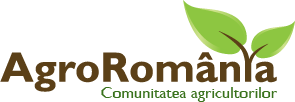Fermenting wheat flour with yeast helps reduce the levels of a precursor to acrylamide by almost 90 per cent, suggests a new study from Denmark.
Sourdough fermentation, which is used in the production of rye bread, did not greatly reduce the level of asparagine, which may then be transformed into acrylamide on baking or toasting, according to findings published in Food Additives & Contaminants: Part A.
Lead author Kit Granby from the Technical University of Denmark’s National food Institute told FoodNavigator.com that the study had implications for food formulators and manufacturers as a means of showing that fermentation is a good way to reduce acrylamide.
“On the contrary, using a baking agent does not remove the precursor so higher acrylamide levels are found in baked and toasted breads,” she added.
Acrylamide is a potential carcinogen that is created when starchy foods are baked, roasted, fried or toasted. It first hit the headlines in 2002, when scientists at the Swedish Food Administration first reported unexpectedly high levels of acrylamide, found to cause cancer in laboratory rats, in carbohydrate-rich foods.
Despite being a carcinogen in the laboratory, many epidemiological studies have reported that everyday exposure to acrylamide in food is too low to be of concern.
This has not stopped industry from exploring ways of removing or reducing the formation of the compound. Successful areas of study have focused predominantly on the precursors to acrylamide, mainly asparagine.
Approaches include converting asparagine into an impotent form using an enzyme, binding asparagine to make it inaccessible, adding amino acids, changing the pH to alter the reaction products, cutting heating temperatures and times, and removing compounds from the recipe that may promote acrylamide formation.
New study
Granby and co-workers studied the formation of acrylamide in baked and toasted wheat and rye bread relative to the asparagine levels in the in flour, dough, bread and toasts.
They report that, after yeast fermentation and baking of the wheat bread, only 12 per cent of the asparagine initially present in the flour was still present. On the other hand, 82 per cent of the asparagine was present in the rye bread after sourdough fermentation and baking.
The difference was probably due to the “more acidic conditions in sourdough-fermented rye bread compared to yeast-fermented wheat dough”, said the researchers.
Toasting both types of bread also increased the acrylamide content, with the final acrylamide content proportional to the asparagine concentration of untoasted bread.
Dietary intakes
Using average Danish intakes of bread, and the average level of acrylamide in wheat and rye bread of 10 and 12 mg per kg, the researchers calculated the average dietary intakes of Danes.
Assuming a toasting of the bread, the researchers calculated that the daily acrylamide intake from bread would be about seven milligrams, representing 28 per cent of the average Danish acrylamide intake.
“Hence, dietary habits, with consumption of toasted bread being common throughout Europe, may considerable increase acrylamide intake from bread,” wrote the researchers.
“Intake of toasted wholemeal wheat bread and bread produced without leavening by fermentation especially may further increase acrylamide exposure.
“The dietary intake of acrylamide from bread (untoasted) of 2 mg per day is relatively low; however, acrylamide exposure from bread increases several fold for people eating toasted bread,” they concluded.
Granby explained to this website that the study was a part of a Danish innovation study in cooperation with Danish industries to reduce acrylamide formation in food. The industrial partner was Lantmannen Schulstad A/S, Hvidovre Denmark.
There was also cooperation with industries within a Nordic innovation centre project on Acrylamide precursors- limiting substrates and in vivo effects (NORDACRYL).
Source: Food Additives & Contaminants: Part A
Volume 25, Issue 8, Pages 921-929, doi: 10.1080/02652030801958905
“Acrylamide-asparagine relationship in baked/toasted wheat and rye breads”
Authors: K. Granby, N.J. Nielsen, R.V. Hedegaard, T. Christensen, M. Kann, L. Skibsted
Sourdough fermentation, which is used in the production of rye bread, did not greatly reduce the level of asparagine, which may then be transformed into acrylamide on baking or toasting, according to findings published in Food Additives & Contaminants: Part A.
Lead author Kit Granby from the Technical University of Denmark’s National food Institute told FoodNavigator.com that the study had implications for food formulators and manufacturers as a means of showing that fermentation is a good way to reduce acrylamide.
Exclusiv - beneficiati acum de Oferta Speciala de mai jos:
Propriul meu plan de afaceri
Stick-ul "Propriul meu plan de afaceri" Ai planuri de afaceri standard Esti o persoana dinamica Profita de Stick-ul "Propriul meu plan de afaceri" Ai 7 modele practice de planuri de afacere cu care obtii mai usor finantari si chiar fonduri europene la mai putin de 100 de lei Stick-ul "Propriul meu plan de...
Oferta Speciala
valabila 48h
valabila 48h
“On the contrary, using a baking agent does not remove the precursor so higher acrylamide levels are found in baked and toasted breads,” she added.
Acrylamide is a potential carcinogen that is created when starchy foods are baked, roasted, fried or toasted. It first hit the headlines in 2002, when scientists at the Swedish Food Administration first reported unexpectedly high levels of acrylamide, found to cause cancer in laboratory rats, in carbohydrate-rich foods.
Despite being a carcinogen in the laboratory, many epidemiological studies have reported that everyday exposure to acrylamide in food is too low to be of concern.
This has not stopped industry from exploring ways of removing or reducing the formation of the compound. Successful areas of study have focused predominantly on the precursors to acrylamide, mainly asparagine.
Approaches include converting asparagine into an impotent form using an enzyme, binding asparagine to make it inaccessible, adding amino acids, changing the pH to alter the reaction products, cutting heating temperatures and times, and removing compounds from the recipe that may promote acrylamide formation.
New study
Granby and co-workers studied the formation of acrylamide in baked and toasted wheat and rye bread relative to the asparagine levels in the in flour, dough, bread and toasts.
They report that, after yeast fermentation and baking of the wheat bread, only 12 per cent of the asparagine initially present in the flour was still present. On the other hand, 82 per cent of the asparagine was present in the rye bread after sourdough fermentation and baking.
The difference was probably due to the “more acidic conditions in sourdough-fermented rye bread compared to yeast-fermented wheat dough”, said the researchers.
Toasting both types of bread also increased the acrylamide content, with the final acrylamide content proportional to the asparagine concentration of untoasted bread.
Dietary intakes
Using average Danish intakes of bread, and the average level of acrylamide in wheat and rye bread of 10 and 12 mg per kg, the researchers calculated the average dietary intakes of Danes.
Assuming a toasting of the bread, the researchers calculated that the daily acrylamide intake from bread would be about seven milligrams, representing 28 per cent of the average Danish acrylamide intake.
“Hence, dietary habits, with consumption of toasted bread being common throughout Europe, may considerable increase acrylamide intake from bread,” wrote the researchers.
“Intake of toasted wholemeal wheat bread and bread produced without leavening by fermentation especially may further increase acrylamide exposure.
“The dietary intake of acrylamide from bread (untoasted) of 2 mg per day is relatively low; however, acrylamide exposure from bread increases several fold for people eating toasted bread,” they concluded.
Granby explained to this website that the study was a part of a Danish innovation study in cooperation with Danish industries to reduce acrylamide formation in food. The industrial partner was Lantmannen Schulstad A/S, Hvidovre Denmark.
There was also cooperation with industries within a Nordic innovation centre project on Acrylamide precursors- limiting substrates and in vivo effects (NORDACRYL).
Source: Food Additives & Contaminants: Part A
Volume 25, Issue 8, Pages 921-929, doi: 10.1080/02652030801958905
“Acrylamide-asparagine relationship in baked/toasted wheat and rye breads”
Authors: K. Granby, N.J. Nielsen, R.V. Hedegaard, T. Christensen, M. Kann, L. Skibsted
Autor: AgroRomania.ro
Votati articolul
Nota: 5 din 1 voturi
Urmareste-ne pe Google News














